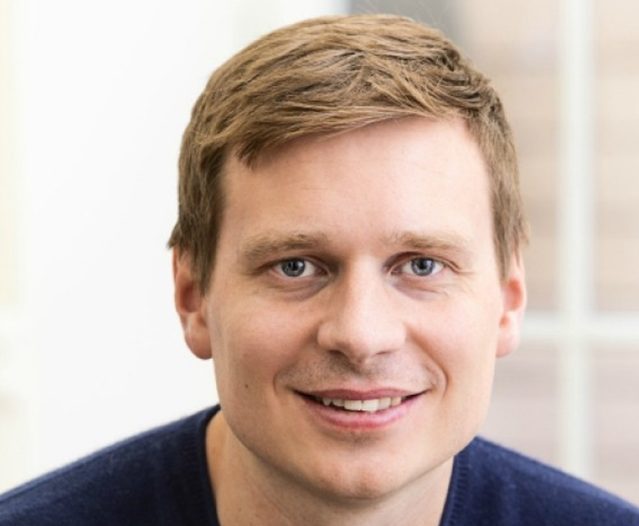Partner content in association with
How Milvik Bima took insurance and health solutions to emerging Asia and Africa
Negla, Indonesia. Source: Jajang Permana at Unsplash
Milvik Bima banked on growing smartphone penetration and the ubiquity of mobile wallets to build a suite of services including insurance and telemedicine, for a hitherto underserved demographic
When it first launched in 2010, Milvik Bima’s vision appeared quixotic: to bring insurance and healthcare solutions to the unbanked and underbanked citizens of emerging countries across the world, leveraging the spread of mobile telephony and e-wallets.
At the time, there were very convincing reasons to not pursue this business model. For instance, the vastness and diversity of the total addressable market and the challenges of taking a tech-enabled solution to an audience with low literacy rates. Add to this, a suspicion born out of bad experiences with mobile telephony among the target demographic, thanks to unscrupulous VAS operators. And perhaps most critically, the fact that even well-intentioned governments and NGOs had only mixed results to show after grappling with these issues for decades.
Investors too were reluctant to bankroll a previously untested model.
Almost a decade later, there is compelling evidence to prove that Milvik Bima was right to pursue this vision. Consumers who opted for its services made payments via their mobile wallet to gain access to insurance. While initially focused on life and health insurance, Milvik Bima’s offering has subsequently expanded to include telemedicine and health services.
Today, it serves 25 million people across 9 countries including Ghana and Tanzania in Africa; and Bangladesh, Cambodia, Indonesia, Malaysia, Pakistan, the Philippines and Sri Lanka in Asia. It has grown revenues by 63% CAGR since launch. Some of its markets like Ghana and Sri Lanka are already profitable. Strong unit economics and a proven business model are driving the rest. The addressable market based on just the countries it is present in at the moment is pegged by Milvik Bima at 500 million people; the long term ambition is to serve a billion.
Building Milvik Bima: A time of learning and unlearning

The company traces its beginnings to Founder and CEO Gustaf Agartson’s desire to use his experience working for a telco to “do something meaningful”. He zeroed in on the need for financial and health protection across emerging markets and was convinced that the solution lay in the intersection between mobile technology and telecom operators. There were encouraging signs pointing to this — in Kenya, for instance, driven by telecom operator Safaricom and e-wallet M-Pesa. Agartson said, “We didn’t know whether mobile wallets would take off. But we were convinced of their growth potential especially where the population is unbanked. We tracked the market and prepared to make wallets the payment channel for our products.”
The team was also armed with a wealth of information on what not to do, thanks to companies who had unsuccessfully attempted to address this market. Among the first realisations: the need for a fresh look at insurance. Legacy structures did not consider the lower and mid income segments from emerging markets. There was a need for frictionless solutions that leverage technology — whether in registration or payments. The last piece of the puzzle was consumer education. Milvik Bima appointed people to guide consumers and help them understand what they were buying. It also highlighted the ease of opting out, which went a long way in persuading an audience who may have previously had poor experiences with value added services. Agartson said, “Technology and digitalisation are key, but not the full solution. They have to be combined with customer education. Internally, we call that mix ‘digital with a human touch’. Others going after the mass market did not do this.”
Winning the regulators over
During the pre-launch process in Ghana in 2010, Agartson personally augmented consumer research, by having multiple conversations with potential customers. He said, “We created prototypes and tried to gauge whether the audience even wanted such a service; if they’d pay and how much; and the reasons that they would or wouldn’t buy.” The offering was simplified by removing almost all exclusions and adding only minimum requirements. The moment of truth was when Milvik Bima paid its first claims and the team could personally assess the impact on people’s lives.
Having cracked its first market, geographic expansion became a little easier. In 2012, Milvik Bima ventured into Asia, starting operations in Bangladesh. It was helped along by the fact that, allowing for geographic and regulatory differences, the fundamental issues that affected the emerging middle class were similar.
Agartson said, “Being able to bring in experience from other markets, and show positive impact had tremendous value. Regulators also have targets and are aligned with what our team is trying to do. They want to increase financial inclusion and access to healthcare.”
However, as Milvik Bima expands its offering from insurance to telemedicine and health services, its interactions with regulators have become more complicated. Agartson said, “We end up spanning across different regulatory bodies, and have to continuously engage with all of them. There are some markets where we did not launch due to regulatory challenges.”
Moving the dial on purpose and profit
However, in the markets it is present in, its successful weaving of purpose and profitability has attracted investor attention. Its list of backers currently include Swedish investor Kinnevik, Allianz X, LeapFrog, CreditEase and Axiata.
The thesis surrounding fintech and healthtech has impacted Milvik Bima as well. The company’s Regional Director for Asia Reynold D’Silva says, “Though we are not actively fundraising, we’ve been approached by potential investors through personal networks and more interestingly, through existing investors which is a big vote of confidence.” Investor interest in the space is riding high, after several high-profile exits. For instance, IPOs for Softbank backed home insurance startup Lemonade and Tiger Global backed insurtech Oscar. Insurance firms Metromile and Kin have opted for SPACs with Insu Acquisition Corp II and Omnichannel Acquisition Corp. The search for the next big thing is clearly underway.
Asked about the potential of Milvik Bima, Agartson believed that insurance and healthcare in emerging markets was a several $100 billion opportunity. He said, “The combination of being the first to integrate with wallets, having achieved product market fit across different countries, and being able to build out a health platform for insurance, telemedicine and other services, makes us a very unique investment opportunity.”
D’Silva added, “Our recurring subscription model is both convenient for customers, as well as financially sustainable — quite rare in the sector. The frictionless payments will be difficult for somebody else to replicate without our years of learning.”
Apart from attracting investors, the combination of purpose and profit helps draw in a committed pool of talent. Agartson said, “It brings in people who really want to build, make a difference, and have a long term mindset.” This was true of D’Silva who joined Milvik Bima after stints with Unilever, Facebook and most recently, Gojek. He said, “The pandemic is the single biggest disruption to our way of life and also the biggest risk to life itself. I have experienced loss and grief during this time, personally. And so, I was very impressed by the track record of Milvik Bima. Not only has the firm pioneered health inclusion in a meaningful way, but it has also made a pivot to do so by leveraging the growing financial inclusion in a changed landscape.”
Milvik Bima sees strong headroom for growth when it comes to technology adoption considering the fact that smartphone penetration is well above 50% and still growing in most Asian markets. Mobile wallet usage is growing at 70% year on year in markets like Indonesia and Bangladesh.
With key markets like Bangladesh growing at 20% month on month for 12 months and a 25% uptick in customer retention and loyalty in Indonesia over the past quarter, the immediate focus is to superserve existing opportunities, even as Milvik Bima looks at markets across Africa and Asia which are conducive to a launch.
Its offering has grown to keep pace with an older audience who have bigger families and larger incomes. It currently offers specialist care for paediatrics, women’s health, diabetes and heart disease. Partnerships with labs and telemedicine service providers ensures ease when it comes to tests, health screening and the delivery of prescription medicines. D’Silva said, “The most challenging aspect is keeping track of the evolving needs and ensuring that we have access to as much data as possible about consumers and their life stage, so that we can keep offering relevant products. Milvik Bima’s Health Platform gives the company an opportunity to do this in a sustainable way.”
Asia has emerged as a technology hub for the company with a 600 strong team including product managers, engineers and data scientists. Agartson who used to be based in Europe moved to Singapore a couple of years ago drawn by the enormous potential. He said, “I hope that during my lifetime, the gap between more developed countries and emerging markets will close. I would like to have contributed to making that happen.”
To know more about how private capital is reshaping healthcare with fintech for the emerging middle class in Asia, please register for the upcoming webinar, sponsored by Milvik Bima, and including speakers from Vertex Ventures, Golden Gate Ventures, HealthXCapital and Allianz X among others

